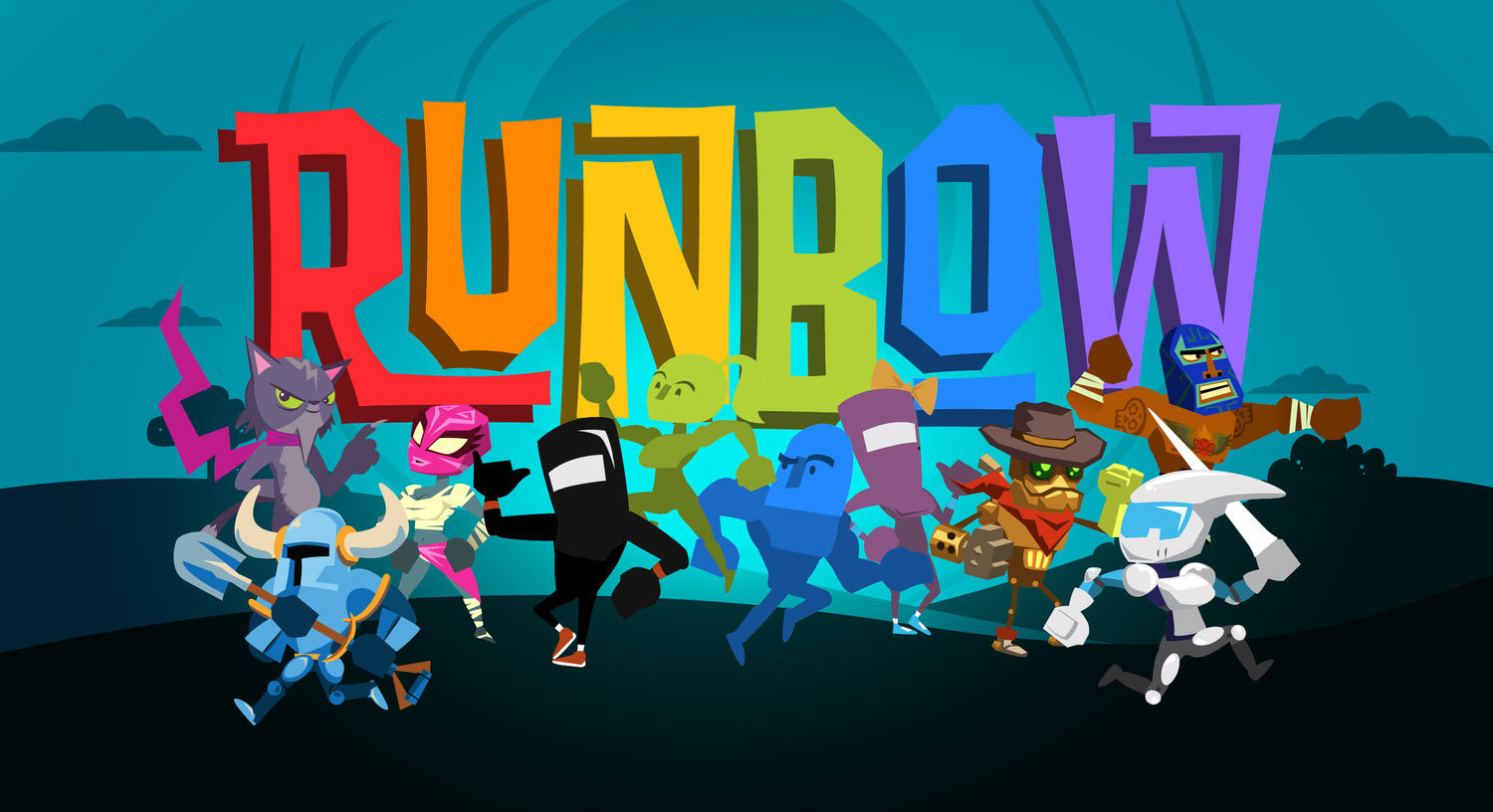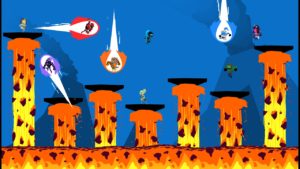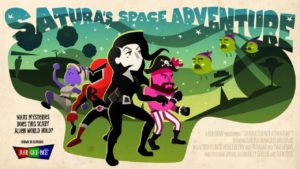Runbow Pocket’s appeal lies in both its unique artstyle and party platformer style that supports up to four players. Don’t worry if you can’t always grab three friends. Runbow is a fun, and a bit hectic, platformer that appeals to both the solo gamer as well as the local co-op fans. The New Nintendo 3DS’s portability compliments Runbow’s pick-up-and-play style. Most levels can be completed in a matter of a few minutes, even after a few deaths. Everything from the gameplay to the story just encourages you to relax and have a fun time, even if many of the levels want to keep you as on the edge as possible.
There are quite a few levels in Runbow Pocket, but with the aforementioned small size of each level, players will be able to make steady progress throughout the game. Levels are broken up into three difficulties: green, yellow and red for easy, normal, and difficult respectively. When a level is beaten, levels adjacent in all directions will unlock, allowing players to make their way to Satura on a path of their choosing. With multiple options, Runbow cleverly puts the game’s difficulty in the hands of the player, rather than having a standard easy/hard mode. This doesn’t mean Runbow pulls all its punches; the closer you get to Satura, the more likely you’ll need to face down a red level.
The rules of Runbow are simple: make your way from point A to point B while the background changes colors. When a certain color hits a platform or obstacle of that same color, it disappears. Runbow takes this simple twist on platforming and spreads it out to 145 levels, while still keeping the experience fresh. Sometimes the background changes slowly, and other times, in the blink of an eye. These levels are split into four themes, bringing in unique elements of that world.
Aside from the wacky costumes players can choose from, much of the game’s humor comes from the digs the death screen prods the player with, such as: “Sun was in your eyes,” “Maybe you should consider retirement,” “Well that was disappointing,” and “This time, for real.” As someone who is extremely familiar with the term “mulligan”, I could not help but chuckle whenever I died. In a game where death is as constant as it is swift, taking the sting out of another failure can be a great attribute. The only drawback here is the death screen lingers for a bit longer than in the Wii U version. While this is a minor complaint, the death screen does break up the momentum a bit, and can frustrate the experience slowly over the course of a gaming session.
Alongside the standard adventure mode, Runbow Pocket offers skilled players a chance to take on the Bowhemoth, a sprawling gauntlet of platforming challenges. Unlike the shorter, one-offs of Adventure Mode, the Bowhemoth is one giant level broken up into smaller sections, which serve as checkpoints. Be warned, if you quit out of Bowhemoth, you’ll have to start all over from the beginning. However, this is where the 3DS comes in handy. If a particular set of challenges has you down, just put down the 3DS and take a breather. Get some fresh air. Don’t let the game designers know they’re getting to you. Once you are ready, just pick up where you left off.
It’s tough to say which port of Runbow is the definitive version. The 3DS version feels like a setback from the Wii U version in a few ways, such as cutting down the multiplayer from nine to four, and the extended loading screens. On the other hand, the 3DS’s portability plays right into 13AM Games’ hands. Short, fun levels than you can play at any time is where Runbow shows its strength, even in the ruthless gauntlet that is the Bowhemoth. Runbow Pocket also happens to contain all of the DLC that was previously released for the Wii U version, giving players an extra incentive. With either version you choose to pick up, you really can’t go wrong with Runbow.
Additional Review Content:
Along with a copy of Runbow Pocket, we had the chance to play Satura’s Space Adventure. The DLC is much shorter than the main campaign, but absolutely delivers in new content. SSA assumes you’ve gotten your feet wet with the main game, and will proceed to layer on new elements and obstacles, such as low gravity, tractor beams, and portals. Each of these new elements uses the same color-dependent mechanic as the main game, so players will sometimes need to think carefully about how they want to proceed. If you’ve mastered Runbow and still want more, you won’t be disappointed if you pick up Satura’s Space Adventure.
Review: Runbow Pocket Deluxe Edition (New Nintendo 3DS)
Fun






December 23, 2019
[…] enjoy. It’s sort of like a cross between the Bit.Trip Saga games, which came before it, and Runbow, which it predates. This familiarity makes it easy to start right up (all you do is jump) though […]